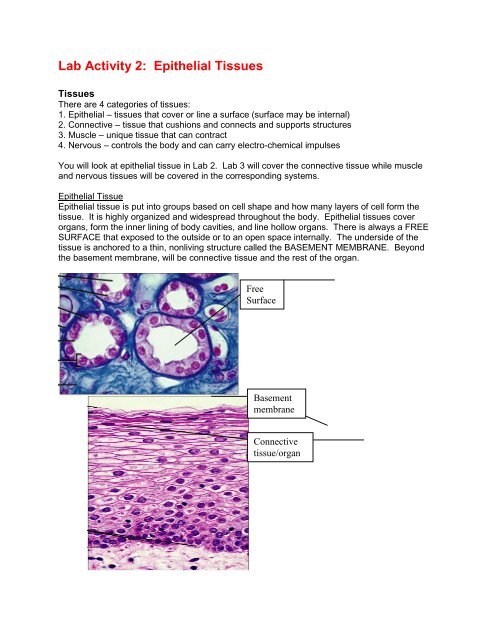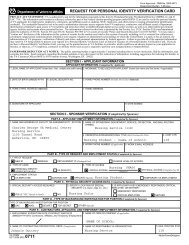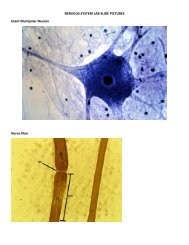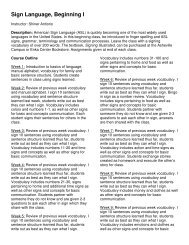Lab Activity 2 Epithelial Tissues
Lab Activity 2: Epithelial Tissues
Lab Activity 2: Epithelial Tissues
- No tags were found...
Create successful ePaper yourself
Turn your PDF publications into a flip-book with our unique Google optimized e-Paper software.
<strong>Lab</strong> <strong>Activity</strong> 2: <strong>Epithelial</strong> <strong>Tissues</strong><br />
<strong>Tissues</strong><br />
There are 4 categories of tissues:<br />
1. <strong>Epithelial</strong> – tissues that cover or line a surface (surface may be internal)<br />
2. Connective – tissue that cushions and connects and supports structures<br />
3. Muscle – unique tissue that can contract<br />
4. Nervous – controls the body and can carry electro-chemical impulses<br />
You will look at epithelial tissue in <strong>Lab</strong> 2. <strong>Lab</strong> 3 will cover the connective tissue while muscle<br />
and nervous tissues will be covered in the corresponding systems.<br />
<strong>Epithelial</strong> Tissue<br />
<strong>Epithelial</strong> tissue is put into groups based on cell shape and how many layers of cell form the<br />
tissue. It is highly organized and widespread throughout the body. <strong>Epithelial</strong> tissues cover<br />
organs, form the inner lining of body cavities, and line hollow organs. There is always a FREE<br />
SURFACE that exposed to the outside or to an open space internally. The underside of the<br />
tissue is anchored to a thin, nonliving structure called the BASEMENT MEMBRANE. Beyond<br />
the basement membrane, will be connective tissue and the rest of the organ.<br />
Free<br />
Surface<br />
Basement<br />
membrane<br />
Connective<br />
tissue/organ
Cell shape<br />
o Squamous – flattened or "squashed" cells. The flat cells are very difficult to see.<br />
The nucleus is basically the only visible part of the cell.<br />
o Cuboidal – cube like cells. The cells may not appear to be perfect<br />
cubes and rigid, so keep in mind that these were once living cells that have fluid<br />
in them.<br />
o Columnar – column or rectangular cells. Please note that the nucleus of each<br />
cell is align roughly.<br />
Layers or organization<br />
o Simple epithelia -- one layer of any of these cell types –<br />
o Stratified epithelia --more than one layer of cells – this is called<br />
o Pseudostratified epithelia -- one layer of column shaped cells that appear to be<br />
more than one layer but are not. The nucleus of each cell is not in an even line<br />
because the cells may vary in shape, but all of the cells do reach the basement<br />
membrane. Pseudostratified commonly possess cilia, and embedded in the<br />
epithelium are accessory cells like goblet cells. Goblet cells are round cells that<br />
generally secrete a substance called mucus that will trap particles, and the cilia<br />
will provide a gentle current to “sweep” the mucus out of the region.








